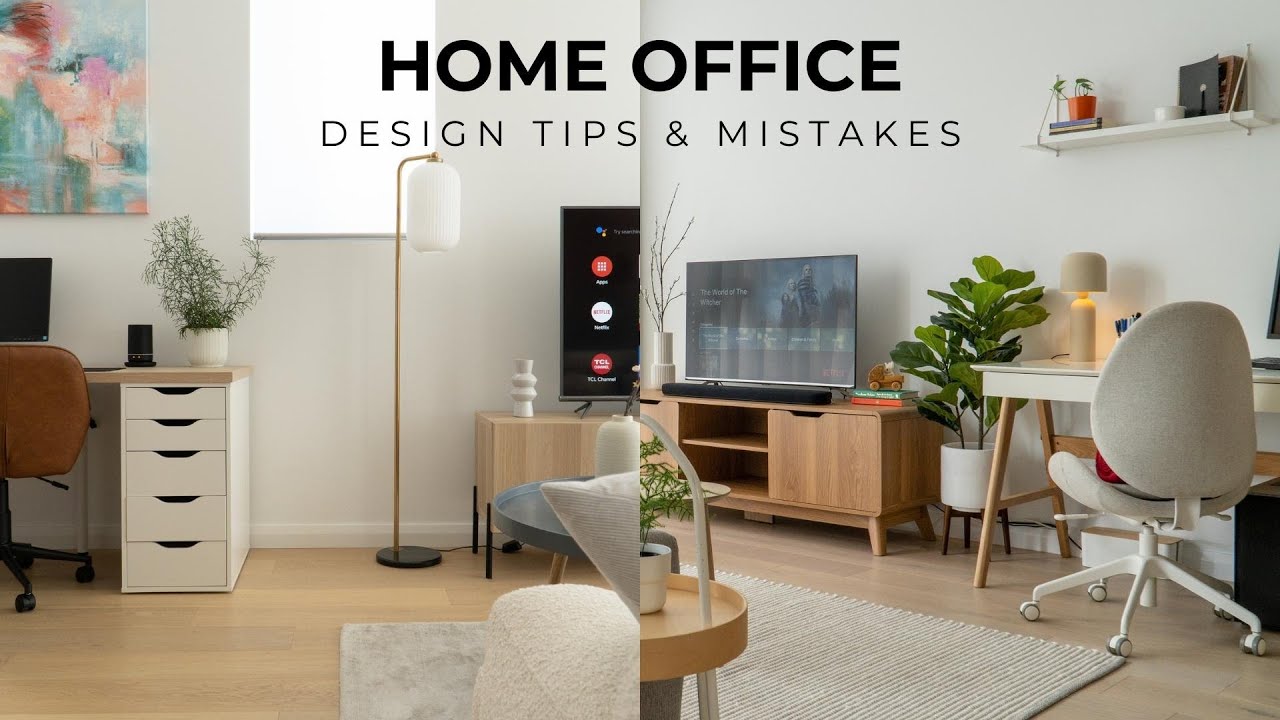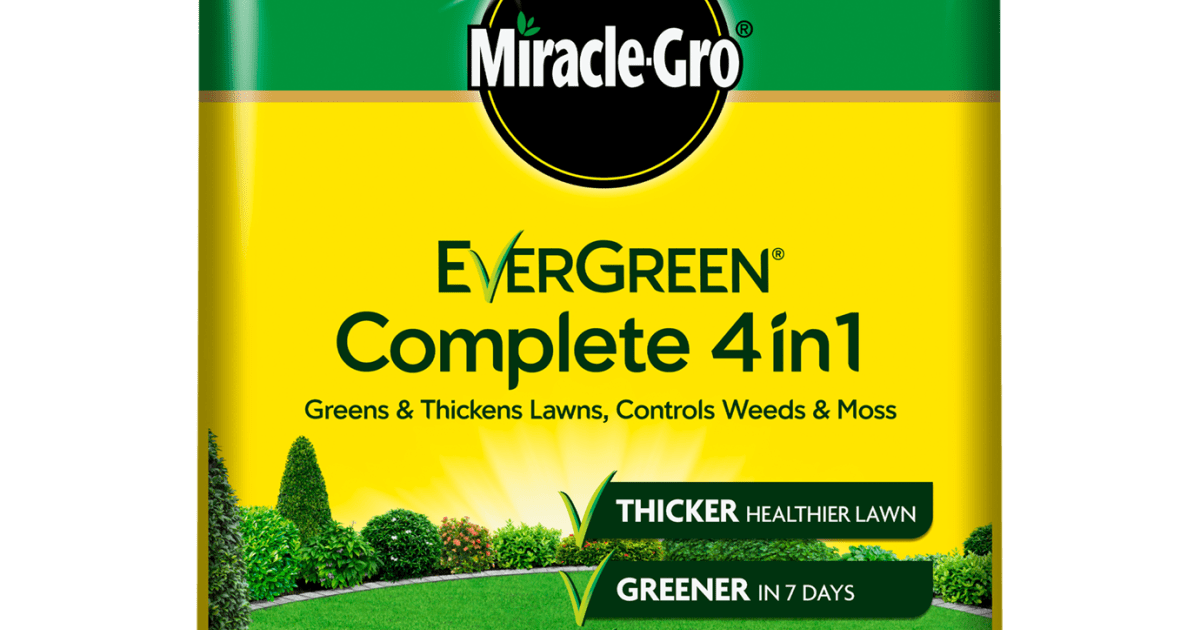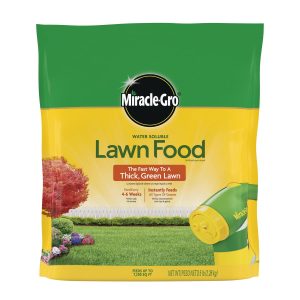Home Garden
Interior Design Trends for 2024

As we move into 2024, the world of interior design continues to evolve, reflecting changes in technology, culture, and personal preferences. This year, the trends in interior design are all about creating spaces that are not only aesthetically pleasing but also functional and sustainable. Whether you’re planning a complete home makeover or just looking to update a room, understanding these trends can help you create a stylish and contemporary living space. Here’s a comprehensive look at the top interior design trends for 2024.
1. Sustainable and Eco-Friendly Design
Sustainability remains a significant focus in 2024’s interior design landscape. More homeowners are becoming conscious of their environmental impact and are seeking ways to incorporate eco-friendly practices into their homes. This includes using sustainable materials like reclaimed wood, bamboo, and recycled metals. Additionally, energy-efficient lighting, appliances, and smart home systems are being integrated to reduce energy consumption. The emphasis is on creating beautiful spaces that also promote environmental well-being.

Image by: Yandex.com
2. Biophilic Design
Biophilic design, which emphasizes the connection between humans and nature, continues to gain popularity. This trend involves incorporating natural elements into interior spaces to create a calming and rejuvenating environment. Think large windows that allow natural light to flood in, indoor plants, natural materials like stone and wood, and water features. The goal is to bring the outside in, creating a harmonious and tranquil living space that enhances well-being.
3. Multifunctional Spaces
With the rise of remote work and flexible living arrangements, multifunctional spaces are becoming essential in modern homes. Interior design in 2024 focuses on creating adaptable spaces that serve multiple purposes. This could mean a home office that doubles as a guest room, a kitchen island that functions as a dining area, or living rooms with modular furniture that can be reconfigured as needed. The key is flexibility and maximizing the usability of every square foot.
4. Bold Colors and Patterns
In 2024, bold colors and patterns are making a comeback. While neutral palettes have dominated interior design for several years, this year is all about making a statement. Vibrant hues like deep blues, rich greens, and bold reds are being used to add personality and drama to spaces. Additionally, patterns such as geometric designs, florals, and abstract prints are being incorporated through wallpapers, textiles, and accessories. This trend allows homeowners to express their creativity and make their spaces uniquely their own.
5. Textured Interiors
Texture plays a crucial role in interior design this year. Adding various textures to a space can create depth and interest, making a room feel more inviting and dynamic. In 2024, expect to see a mix of materials like velvet, linen, wool, and rattan. Textured wall coverings, layered rugs, and tactile furniture pieces are all popular choices. The use of texture is not just limited to fabrics but also includes surfaces like textured tiles, rough-hewn wood, and matte finishes.
6. Minimalism with a Twist
While minimalism remains a popular design philosophy, 2024 brings a new twist to this trend. The focus is on creating simple, clutter-free spaces, but with an added layer of warmth and character. This means incorporating personal touches, such as unique artwork, heirloom pieces, and curated collections that tell a story. The idea is to blend the clean lines and simplicity of minimalism with elements that reflect the homeowner’s personality and experiences.
7. Smart Home Integration
Technology continues to play a significant role in interior design, with smart home integration becoming more prevalent. In 2024, homes are becoming increasingly automated, with smart lighting, heating, security systems, and even furniture that can be controlled via apps and voice commands. This trend enhances convenience and efficiency, allowing homeowners to create a seamless and futuristic living environment.
8. Wellness-Focused Design
Wellness and self-care are becoming central themes in interior design. Creating spaces that promote relaxation, health, and well-being is a key trend for 2024. This includes incorporating features like home gyms, meditation areas, and spa-like bathrooms. Natural light, air purification systems, and ergonomic furniture are also important elements. The aim is to design homes that support a healthy lifestyle and provide a sanctuary from the stresses of daily life.
9. Vintage and Retro Influences
Nostalgia plays a big role in 2024’s interior design trends. Vintage and retro influences are making a comeback, with design elements from the mid-century modern era, the 70s, and even the 90s being reimagined for contemporary spaces. This trend includes furniture with retro silhouettes, bold color palettes, and eclectic accessories. Mixing vintage finds with modern pieces can create a unique and charming aesthetic that feels both timeless and current.

Image by: Yandex.com
10. Personalized and Custom Designs
Finally, personalization is at the forefront of interior design trends for 2024. Homeowners are looking for ways to make their spaces uniquely theirs, with custom-designed furniture, bespoke cabinetry, and personalized décor. This trend is about creating a home that reflects individual tastes and lifestyles, with one-of-a-kind pieces and tailored solutions that meet specific needs and preferences.
Conclusion
The interior design trends for 2024 are all about creating spaces that are sustainable, functional, and deeply personal. From embracing bold colors and patterns to integrating smart technology and focusing on wellness, this year’s trends offer a variety of ways to transform your home into a stylish and comfortable haven. Whether you’re planning a major renovation or just a few updates, these trends provide inspiration for making your living space reflect the best of contemporary interior design.
Home Garden
Beat the Heat at Home: Easy Hacks for Summer Comfort

Introduction
Summer days can turn your home into a sauna if you’re not prepared. With rising energy costs and frequent heat waves, keeping cool indoors without breaking the bank is a real challenge. Fortunately, you can beat the heat at home with a few simple, easy summer hacks. From improving airflow and blocking the sun to choosing the right bedding and hydrating the air, these practical tips will help you maintain summer comfort all season long. Let’s dive into ten straightforward strategies to transform your home into a refreshing oasis.
Beat the Heat at Home: Easy Hacks for Summer Comfort
1. Optimize Airflow with Strategic Fan Placement
Fans are your first line of defense against indoor heat. Here’s how to use them effectively:
- Cross-Ventilation: Place one fan near a window facing out and another across the room facing in. This setup pushes hot air out and draws cooler air in.
- Elevate Your Standing Fan: Raise a standing fan on a small stool to circulate air at head height. Cool breezes reach more of the room.
- Ceiling Fans: Set blades to counterclockwise at medium speed to push cool air down.
- DIY Ice Fan Hack: Fill a shallow bowl with ice, place it in front of a fan, and let it blow chilled air around the room.
These airflow tips help beat the heat at home without cranking up the AC.
2. Block Sunlight with Curtains and Reflective Film
Direct sunlight can raise indoor temperatures by several degrees. Use these summer home tips:
- Blackout Curtains: Heavy, light-blocking drapes prevent heat gain and keep rooms up to 10°F cooler.
- Window Film: Reflective or UV-blocking film applied directly to glass reduces glare and heat.
- Outdoor Shades: Install awnings or roll-down shades on sunny windows.
- Insulating Blinds: Cellular or honeycomb blinds trap air and add insulation.
By cutting sunlight before it hits your walls and floors, you maintain summer comfort naturally.
3. Switch to Cooling Bedding and Fabrics
Your bedding choice impacts your nighttime comfort:
- Breathable Sheets: Opt for cotton, linen, or bamboo fabrics that wick moisture and allow air to flow.
- Moisture-Wicking Pillowcases: Look for materials labeled “cooling” or “performance.”
- Lightweight Duvets: Swap heavy comforters for thin cotton or linen covers.
- Chilled Pillow Hack: Store your pillowcases in a sealed bag in the fridge for an instant cool-down at bedtime.
These easy summer hacks help you sleep comfortably during hot nights.
4. Hydrate the Air with DIY Humidifiers and Houseplants
Dry, hot air can feel even warmer. Raise humidity slightly for comfort:
- DIY Humidifier: Place shallow bowls or pans of water near heat sources or windows. As the sun warms them, evaporation cools the room.
- Houseplants: Plants like Boston ferns and peace lilies release moisture into the air. Three to five plants in a room can boost humidity by up to 10%.
- Misting Bottles: Lightly mist the air or your skin for instant relief.
Balanced humidity makes the air feel cooler, enhancing your summer comfort.
5. Cool Down with Refreshing Showers and Foot Baths
Personal cooling keeps you comfortable even if the whole house is warm:
- Lukewarm Showers: Avoid scalding or icy water—lukewarm showers help regulate body temperature.
- Foot Soaks: Fill a basin with cool water and soak your feet for 5–10 minutes. Pressure points on your feet help lower overall body heat.
- Chilled Washcloth: Dampen a washcloth with cold water and drape it across your forehead or neck.
These quick, refreshing rituals are some of the simplest easy summer hacks for beating heat stress.
6. Stay Refreshed with Cool Drinks and Snacks
What you eat and drink affects how you feel in the heat:
- Hydrating Beverages: Drink water, coconut water, or herbal iced tea throughout the day.
- Electrolyte Snacks: Eat watermelon, cucumber, and oranges for natural hydration and vitamins.
- Homemade Popsicles: Freeze blended fruit and yogurt in molds for a healthy, cooling treat.
- Avoid Caffeine and Alcohol: Both can dehydrate you and make you feel hotter.
Fuel your body with water-rich foods to maintain internal comfort.
7. Reduce Indoor Heat Sources
Cut down on appliances and activities that generate heat:
- Lights Off: Replace incandescent bulbs with LED lights and turn off unused fixtures.
- Unplug Devices: Electronics and chargers draw power and heat even when idle.
- Cook Outside: Use a grill or slow cooker to avoid heating up the kitchen.
- Laundry Timing: Do laundry in the early morning or late evening when temperatures dip.
Lowering internal heat production is a critical part of summer home tips.
8. Insulate and Seal Drafts
Proper insulation keeps cool air in and hot air out:
- Door Draft Stoppers: Place a rolled-up towel or foam tube at the base of doors to block warm drafts.
- Window Seals: Apply weatherstripping to close gaps around window frames.
- Attic and Wall Insulation: Ensure your home has adequate insulation to reduce heat transfer.
- Rugs and Carpets: Covering bare floors adds an extra layer of insulation and can keep feet cool or warm as needed.
Good sealing and insulation are long-term summer comfort investments.
9. Embrace Nighttime Cooling
Use cooler evening air to your advantage:
- Open Windows: After sundown, open windows on opposite sides of the house to create a cross-breeze.
- Window Fans: Place fans in windows to draw in cooler outside air and push out warm indoor air.
- Thermal Mass: If you have tile or concrete floors, leave them bare to absorb cool night air and stay cool during the day.
Nighttime strategies help maintain a lower base temperature for daytime comfort.
10. Upgrade with Smart Home Tools
Tech solutions can make cooling more efficient:
- Programmable Thermostat: Set it higher when you’re out and cool down just before you return.
- Smart Plugs and Fans: Use voice assistants or apps to turn fans on and off remotely.
- Ceiling Fan Timers: Automate speed changes to match sleep cycles or afternoon heat peaks.
- Energy-Efficient AC Units: If you need air conditioning, choose models with high SEER ratings and regular maintenance schedules.
Smart tools optimize comfort and save on energy bills, rounding out your easy summer hacks.
Comparative Table: Cool Down Hacks at a Glance
| Hack | Description | Benefits |
|---|---|---|
| Blinds or Blackout Curtains | Block sunlight and prevent heat gain during the day. | Reduces reliance on AC, saves energy. |
| DIY Air Cooler (Ice & Water + Fan) | Creates a cool breeze by evaporating water. | Affordable, readily available materials. |
| Strategic Towel Trick | Cools surrounding air through evaporation. | Simple to implement, uses minimal resources. |
| Nighttime Ventilation | Allows cooler nighttime air to circulate. | Energy-efficient cooling strategy. |
| Light Bedding | Promotes breathability and comfort during sleep. | Improves sleep quality on hot nights. |
| Strategic Cooking | Reduces heat generated in the kitchen. | Maintains a cooler indoor environment. |
| Cool Shower | Lowers body temperature quickly. | Refreshing and invigorating. |
Conclusion
Beating the heat at home this summer doesn’t require a hefty AC bill. By optimizing airflow, blocking sun, and choosing cooling bedding, you create a comfortable base. Simple steps—like DIY humidifiers, refreshing showers, and hydrating snacks—keep your body cool, while sealing drafts and smart home tools maintain a fresher indoor climate. Embrace these easy summer hacks to enjoy summer comfort without sacrificing energy efficiency or budget. With thoughtful planning and a few small changes, you can transform your home into a cool, relaxing retreat all season long.
Home Garden
Create a Home Office You Love: 10 Simple Steps

Introduction
Working from home doesn’t have to mean squinting at a laptop on the couch. A well-designed home office can boost productivity, improve comfort, and even spark creativity. Whether you have a spare room or a corner in your living area, creating a home office you love starts with thoughtful planning and personal touches. From choosing the right desk and chair to adding plants and proper lighting, this guide offers ten simple steps to transform any space into an inspiring, functional workspace you’ll enjoy daily.
Top 10 Simple Steps to Create a Home Office You Love

Image by: Yandex.com
1. Choose the Perfect Location
The first step in your home office setup is finding the right spot:
- Spare Room or Nook: A quiet room is ideal, but a corner of the living room or bedroom can work too.
- Natural Light: Position your desk near a window to reduce eye strain and boost mood.
- Minimal Distractions: Avoid high-traffic areas, TV noise, or household chores within sight.
Selecting the right location lays the foundation for focus and creativity.
2. Invest in Ergonomic Furniture
Comfort is key when you spend hours at your desk:
- Adjustable Chair: Choose one with lumbar support, adjustable height, and armrests.
- Right-Height Desk: Your elbows should form a 90° angle when typing. Consider a sit-stand desk if you want to alternate positions.
- Monitor Setup: Place the top of your screen at eye level, about an arm’s length away.
Good ergonomics prevent back pain and fatigue, helping you stay productive longer.
3. Optimize Lighting for Focus
Proper lighting reduces eye strain and creates a welcoming atmosphere:
- Layered Lighting: Combine overhead lights, task lamps, and ambient sources.
- Task Lamp: A desk lamp with adjustable brightness and color temperature helps with reading and detail work.
- Natural Light: Use sheer curtains to diffuse harsh sunlight and position your desk to avoid glare.
Balanced lighting keeps you alert and reduces headaches.
4. Establish Smart Storage Solutions
Clutter can kill creativity. Keep your office tidy with smart storage:
- Shelving Units: Floating shelves or bookcases for books, files, and décor.
- Desk Organizers: Drawers, trays, and pen holders keep small items in place.
- Baskets and Boxes: Labelled containers hide cables, chargers, and office supplies.
- Cable Management: Use clips, sleeves, or under-desk trays to keep cords out of sight.
A clean workspace helps you think clearly and find everything you need quickly.
5. Personalize with Inspiring Décor
Add personality to your office to make it feel inviting:
- Wall Art: Hang prints, posters, or framed photos that motivate you.
- Color Palette: Choose soothing tones like soft blues or greens, or energizing hues like yellow accents.
- Plants: Low-maintenance greenery—succulents, snake plants, or pothos—improves air quality and mood.
- Textiles: A cozy rug or throw pillow adds comfort and warmth.
A personalized space feels more like “you,” making work more enjoyable.
6. Create a Functional Layout
Arrange furniture and tools for maximum efficiency:
- Primary Work Zone: Place your desk, chair, and monitor at the center.
- Secondary Zones: Nearby shelves or drawers for reference materials and supplies.
- Movement Space: Ensure enough room to stretch and move without obstacles.
- Meeting Area: If you do video calls or host clients, include a small seating area or backdrop.
A thoughtful layout minimizes distractions and makes everything accessible.
7. Incorporate Technology Thoughtfully
Technology powers modern work, but too many devices can be overwhelming:
- All-in-One Printer: Saves desk space and reduces cable clutter.
- Wireless Peripherals: A wireless keyboard and mouse free up desk real estate.
- High-Speed Internet: Position your router nearby or use an ethernet cable for stable connections.
- Headset or Speakers: Noise-canceling headphones or quality speakers improve focus and call quality.
Invest in tools that enhance productivity without overloading your space.
8. Develop Daily Routines and Zones
An organized office pairs well with structured routines:
- Morning Ritual: Start with a quick desk tidy, a cup of tea, and a review of your to-do list.
- Time Blocks: Schedule focused work sessions (e.g., Pomodoro technique) with short breaks.
- End-of-Day Cleanup: Spend five minutes clearing your desk and planning tomorrow’s tasks.
- Zones for Tasks: Dedicate areas for specific activities—computer work, reading, brainstorming—so your brain associates locations with actions.
Consistent routines help you stay on track and maintain a clean workspace.
9. Balance Productivity with Wellness
Your home office should support both work and well-being:
- Movement Reminders: Set alarms or use apps that prompt you to stand, stretch, or walk every hour.
- Water Station: Keep a water bottle within reach and a small snack like nuts or fruit.
- Mindfulness Corner: A small mat or cushion for quick breathing exercises or meditation.
- Break Area: A comfortable chair or window seat where you can rest your eyes and recharge.
Combining work zones with wellness areas prevents burnout and keeps you energized.
10. Evolve Your Space Over Time
A great home office grows with you:
- Seasonal Updates: Switch decor elements—cushions, wall art, or desk accessories—to refresh the look.
- Tech Upgrades: As your needs change, add new tech like a second monitor or improved lighting.
- Feedback Loop: Every few months, ask yourself: What’s working? What’s distracting? Then adjust.
- Expand When Needed: If your family needs the office space, consider fold-away desks or dual-purpose furniture.
An adaptable office stays relevant and continues to inspire your best work.
Conclusion
Creating a home office you love means blending ergonomics, aesthetics, and functionality in a space that reflects your style and supports your goals. Start by choosing a quiet, well-lit location and investing in a comfortable chair and desk. Tackle storage to reduce clutter, personalize with art and plants, and arrange a layout that makes work easy. Incorporate the right technology, establish daily routines, and add wellness zones to keep energy high. Finally, revisit and refresh your setup as your needs evolve. Follow these ten steps for a productive workspace you look forward to entering each day.
Home Garden
Transform Your Lawn with Miracle Gro 4 in 1 Today

If you’ve been staring at a dull, patchy lawn and wondering how to bring it back to life, you’re not alone. Most UK homeowners dream of that lush, green carpet of grass – and Miracle Gro 4 in 1 might just be the answer.
Let’s dig into why this product is becoming a must-have for garden lovers across the UK, and how it fits perfectly in your lawn care routine.

What is Miracle Gro 4 in 1?
Miracle Gro 4 in 1 is a multi-action lawn care product that does exactly what the name suggests – four benefits in one go:
Kills Weeds – Targets common lawn weeds like dandelions and clover.
Kills Moss – Helps eliminate moss, which can choke your grass.
Feeds Your Lawn – Nutrients penetrate deep to promote healthy growth.
Greens & Strengthens – Gives you that vibrant, rich green colour.
In short, it’s a weed killer, moss killer, lawn feed, and growth booster – all packed in one easy-to-use product.
Why Lawn Care Matters in the UK
The UK’s ever-changing weather – rain, frost, cloud cover – can really put your lawn through the wringer. Over time, your grass can thin out, weeds start popping up, and moss begins to take over. Without regular care, it becomes a losing battle.
That’s where a reliable solution like Miracle Gro 4 in 1 comes in. It’s designed for UK lawns, addressing exactly the problems we face in our gardens.
How Does Miracle Gro 4 in 1 Work?
Let’s break it down simply. When you apply Miracle Gro 4 in 1, it starts working in stages:
Week 1-2: You’ll start to see weeds curling up and moss turning black – a clear sign it’s dying off.
Week 3-4: Grass becomes greener and denser as nutrients kick in.
Week 5 onwards: A visibly stronger lawn with fewer bare patches.
The secret? It contains selective weed killers that target weeds without harming grass, and a high-quality lawn feed rich in nitrogen and potassium.
How to Use Miracle Gro 4 in 1 Effectively
Using Miracle Gro 4 in 1 is easy – just follow these steps:
Step 1: Choose a Dry Day
Make sure your lawn is dry and it’s not expected to rain for 24 hours after application.
Step 2: Mow the Lawn
Cut your grass to a medium height (not too short). This helps the product reach the roots more effectively.
Step 3: Apply Evenly
You can use a spreader (recommended for large areas) or by hand for smaller lawns. Follow the application rate on the label – overdoing it can damage your grass.
Step 4: Wait and Watch
Don’t water or mow for a few days. Let the product do its magic. You’ll soon start to notice results.
How Often Should You Use It?
Apply it twice a year – once in spring and once in autumn – to keep your lawn in peak condition. This timing aligns with key growth periods in the UK climate.
Avoid overuse. While it’s tempting to keep applying more, your lawn needs time to absorb the nutrients and regenerate.
Real-Life Results: What UK Gardeners Are Saying
We’ve spoken to gardeners across the UK, and here’s what they had to say:
“I’ve tried countless products but nothing has worked like Miracle Gro 4 in 1. Within weeks, the moss was gone and my lawn looked brand new.”
– Emily, Manchester
“Easy to apply and the results are impressive. It’s become my go-to lawn care solution every spring.”
– Rob, Surrey
You can check out more reviews and purchase it directly from Fit Fit Garden.
Why Buy from Fit Fit Garden?
At Fit Fit Garden, we understand the needs of UK gardeners. When you buy from us, you’re not just getting a product – you’re getting:
Trusted brands like Miracle Gro.
Fast delivery across the UK.
Excellent customer support ready to guide you with any questions.
Explore more from our garden care category and complete your lawn care kit.
Pro Tips for a Healthier Lawn
Want to make the most of Miracle Gro 4 in 1? Here are a few expert tips:
✅ Aerate Your Lawn
Use a garden fork to create small holes. This allows air, water, and nutrients to penetrate the soil.
✅ Remove Thatch
Thatch is the layer of dead grass that builds up over time. Rake it out before applying any treatment.
✅ Water Wisely
Water deeply but less frequently. This encourages deep root growth.
Safe Lawn, Happy Family
Concerned about safety for pets or children? Once the product has been watered in and the lawn has dried, it’s safe for kids and pets to use the area again. Just remember to keep them off while the treatment settles.
For more tips on garden safety, visit the Royal Horticultural Society (RHS) website – a great external resource for UK gardeners.
Frequently Asked Questions
Is it safe for all types of grass?
Yes, Miracle Gro 4 in 1 is designed for most UK lawn types. Avoid using it on new lawns less than 6 months old.
What if I have lots of moss?
Apply once, wait a few weeks, rake out the dead moss, and re-seed any bare areas. You can reapply in the next season.
Does it need watering in?
Only if there’s no rain within 48 hours. A light watering helps activate the feed.
A Final Word – Bring Back the Beauty of Your Lawn
Your garden is your personal retreat, and your lawn plays a big part in that. If it’s full of weeds, moss, and brown patches, it’s time for change.
-
Business2 years ago
Cybersecurity Consulting Company SequelNet Provides Critical IT Support Services to Medical Billing Firm, Medical Optimum
-
Business2 years ago
Team Communication Software Transforms Operations at Finance Innovate
-
Business2 years ago
Project Management Tool Transforms Long Island Business
-
Business2 years ago
How Alleviate Poverty Utilized IPPBX’s All-in-One Solution to Transform Lives in New York City
-
health2 years ago
Breast Cancer: The Imperative Role of Mammograms in Screening and Early Detection
-
Sports2 years ago
Unstoppable Collaboration: D.C.’s Citi Open and Silicon Valley Classic Unite to Propel Women’s Tennis to New Heights
-
Art /Entertainment2 years ago
Embracing Renewal: Sizdabedar Celebrations Unite Iranians in New York’s Eisenhower Park
-
Finance2 years ago
The Benefits of Starting a Side Hustle for Financial Freedom






























